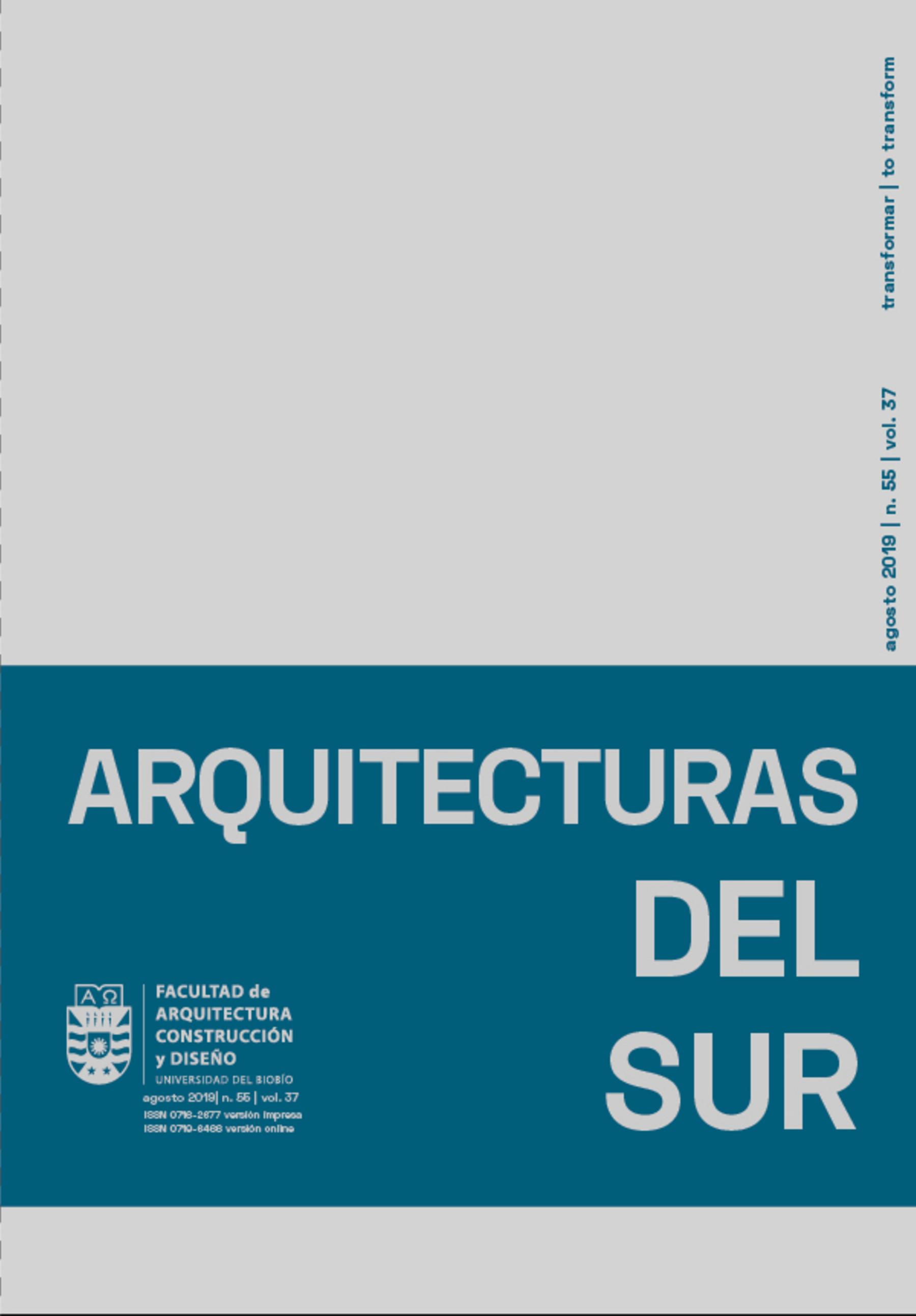Possible futures for the Central University of Equador’s student residency: A methodological approach for it’s renovation
DOI:
https://doi.org/10.22320/07196466.2019.37.055.02Keywords:
Student residence, Modern Movemen, Quito, renovationAbstract
In recent years, the Modern Movement has begun to view itself from the perspective of conservation, fostering debate on the redefinition and progressive expansion of the concept of heritage. Although Ecuador has begun to closely examine its inheritance, the recording and brief study of these contributions has made it impossible to preserve iconic buildings, which has led to undiscerning interventions, abandonment or even demolition. The Central University of Ecuador ́s (UCE) Student Residence, an iconic project of the Ecuadorian Modern Movement, is one of the examples of how a series of similarly important projects is in a deteriorated state with no clear prospects for its recovery. This article presents a methodological process to propose alternative futures regarding its conservation, whose potential lies not only in the architectural value. The UCE Residence is part of a context in which, along with a series of foreign influences, modernization begins to embrace Quito (like other Latin American cities) in the midst of a series of cultural conflicts, political transitions and economic fluctuations that are reflected in the buildings. The objective of this article is to provide general guidelines through research, analysis and synthesis, in the face of the discussion on the UCE Student Residence as an important witness to the history of Ecuador. The process is divided into three phases: a) knowledge, which involves research and architectural and multidisciplinary documentation; b) reflection and design, a result of the previous phase that generates discussion tools; and c) decision making, structured as a discussion about the ethical and aesthetic possibilities of the intervention on the object of study.
Downloads
References
BARRETO, D. (2015). La autonomía universitaria en el Ecuador. Revista Anales (Universidad Central del Ecuador) 1(373), 237-260.
Do.co.mo.mo Ecuador. Recuperado de http://docomomo.ec/
DRUOT, F.; LACATON, A. y VASSAL, J.P. (2007). Plus: La vivienda colectiva. Territorio de excepción. Barcelona: Editorial Gustavo Gili, SL.
HERMIDA, M. A. (19 de abril de 2013). La arquitectura moderna y la necesidad de investigar. Diario El Telégrafo. Recuperado de: https://bit.ly/2Y909Hn
LLORCA, N. (2019). 40 años declaratoria de Patrimonio y la Bienal de Arquitectura de Quito. UISEK GLOBAL, (3), pp. 16-17.
LUNA, C. (2019). Estudio Teórico y Desarrollo Proyectual para la rehabilitación arquitectónica de la Residencia Estudiantil de la Universidad Central del Ecuador. Trabajo de Título. Quito: Universidad Internacional SEK.
MONARD, S. (2015). Arquitectura Moderna de Quito en el contexto de la XI Conferencia Interamericana, 1954–1960. Tesis de Magíster. Barcelona: Universitat Politècnica de Catalunya.
ORTIZ, A. (2004). Residencia Universitaria (Universidad Central Del Ecuador). En A. ORTIZ (Ed.), Ciudad de Quito Guía de Arquitectura, vol. II. Quito: Junta de Andalucía, pp. 354-355.
PERALTA, E. y MOYA, R. (2007). Residencia Universitaria UCE. En Guía Arquitectónica de Quito. Quito: Trama, p. 281.
PUENTE, G. (2015). Modernism in Quito, Ecuador: 1955-1980. Do.co.mo.mo_us. Recuperado de http://docomomo-us.org/news/modernism-in-quito-ecuador-1955-1980
RODAS, G. (26 de marzo de 2016). El gobierno se cayó luego de invadir la Universidad Central. El Comercio. Recuperado de https://bit.ly/2XQ2xDN
ROSERO, V. (2017). Demolición: el agujero negro de la modernidad. Madrid: Diseño Editorial, S.A.
SALVADOR, J. (2009). Planes Urbanísticos: El primer plan regulador. En Historia de Quito "Luz de América" Bicentenario del 10 de agosto de 1809. Quito: Trama, pp. 270-272.
En la residencia universitaria no reside nadie. (17 de octubre de 2008). Diario La Hora. Recuperado de https://bit.ly/2XXQnUC
TORRES, C. (2014). La rehabilitación arquitectónica planificada. ARQ, (88), pp. 30-35.
Downloads
Published
How to Cite
Issue
Section
License
The content of the articles published in each issue of Arquitecturas del Sur is the sole responsibility of the authors and does not necessarily represent the opinion of University of the Bío-Bío.
The authors will maintain their copyright; however, they will guarantee the journal the right to first publication and dissemination of their work. The publication of the article in Arquitecturas del Sur will be subject to the Creative Commons International license (CC BY-SA) that allows others to adapt: remix, transform and build on the material for any purpose, even commercially; share: copy and redistribute the material in any medium or format, as long as the authorship and first publication in this journal are acknowledged by citing them correctly, and their new contributions are under a license with the same terms.














 Programa de Información Científica/Concurso Fondos de Publicación de Revistas Científicas 2018/ Proyecto Mejoramiento de Visibilidad de Revistas UBB (Código:FP180007)
Programa de Información Científica/Concurso Fondos de Publicación de Revistas Científicas 2018/ Proyecto Mejoramiento de Visibilidad de Revistas UBB (Código:FP180007) 
